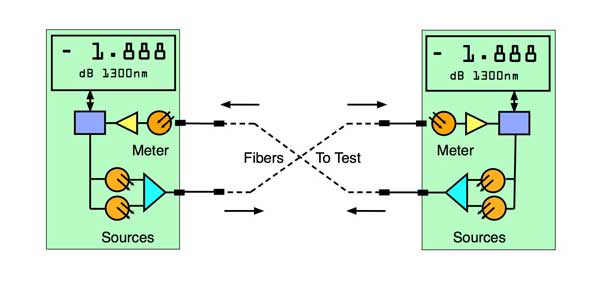The Importance of an Optical Fibre Diameter Analyser in R&D
The Importance of an Optical Fibre Diameter Analyser in R&D
Blog Article
Enhance Your Fiber Optic Projects With an Efficient Diameter Analyser
The integration of a reliable diameter analyser into fibre optic projects functions as a pivotal element in achieving precision and consistency. By facilitating accurate diameter dimensions, these analysers not just boost the quality of setups yet also reduce potential compatibility problems amongst components. In addition, the advanced capacities of modern-day analysers streamline data collection and quality control processes. As we check out the critical features and advantages of these devices, it ends up being apparent how they can change job outcomes and ensure adherence to industry standards. What remains to be talked about is exactly how to successfully apply these analysers in your existing workflows.
Importance of Diameter Measurement
Measuring the size of fiber optic cords is a crucial job that makes certain optimal efficiency and integrity in interaction systems. Precise size dimension is necessary for numerous factors, largely for maintaining signal honesty and lessening loss. A cable's diameter straight affects its capability to transfer light properly; deviations from the defined diameter can bring about increased depletion, which affects the general efficiency of the network.
Furthermore, precise measurement is important during the setup and maintenance of fiber optic systems. An incorrect fit in between adapters and cable televisions can result in signal degradation or full failing of interaction links. By ensuring that sizes are within specified resistances, service technicians can improve compatibility between components, bring about enhanced system integrity.
Furthermore, size measurement plays a significant duty in quality assurance throughout manufacturing. Uniformity in the size of fiber optic cable televisions is essential for making sure uniform efficiency throughout different sets. optical fibre diameter analyser. This consistency aids makers keep industry requirements and fosters self-confidence among end-users
Attributes of an Efficient Analyser
An efficient analyser for fiber optic tasks must integrate a number of vital features that improve precision and usability in diameter measurement. To start with, high-resolution optical sensors are necessary for accurate diameter readings, allowing customers to spot even the tiniest variations in fibre thickness. These sensing units need to be enhanced by innovative calibration systems, ensuring regular efficiency across different problems and products.
Second of all, an user-friendly user interface is crucial for helping with simplicity of procedure. This consists of intuitive software that enables smooth information input and output, in addition to aesthetic representations of the dimensions taken. A portable layout boosts functionality in various field environments, making it much easier to carry out evaluations on-site.
In addition, the analyser should support several dimension settings, suiting numerous fiber types and applications. The ability to store and fetch historic information is one more vital feature, enabling individuals to track performance over time and make informed decisions.
Advantages for Fibre Optic Projects
Applying a size analyser in fiber optic jobs uses considerable benefits that substantially boost job effectiveness and quality. One of the key benefits is the capability to make sure specific measurements of fiber diameter, which is crucial for keeping ideal performance in fibre optic systems. Precise diameter analyses aid in the recognition of incongruities that might result in signal degradation or loss, hence making sure high-grade transmission.
Additionally, the use of a diameter analyser simplifies the top quality control procedure. By automating measurement tasks, project groups can minimize the time spent on hand-operated assessments, resulting in faster task completion and minimized labour prices. This effectiveness additionally enables for even more strenuous testing methods, causing improved item reliability.
Moreover, uniformity in fibre size measurements advertises compatibility with various other fiber optic components, lessening the risk of installation mistakes and enhancing overall system efficiency. The unification of a diameter analyser not only help in keeping sector criteria but additionally promotes self-confidence in click this project deliverables.
Assimilation Into Existing Workflows
Incorporating a diameter analyser into existing operations can dramatically improve the operational performance of fiber optic jobs. By perfectly integrating this modern technology, teams can accomplish specific dimensions article source that are critical to preserving the stability and performance of fiber optic systems. This combination permits for real-time information collection and evaluation, which can be essential during the manufacturing and installation stages.
Furthermore, the capability to automate size dimension processes minimizes the possibility for human mistake, making certain consistent quality control throughout the job lifecycle. The data generated can be easily shared across platforms, facilitating cooperation amongst designers, professionals, and task managers. This accessibility enhances decision-making and increases project timelines.

Selecting the Right Diameter Analyser
When choosing a size analyser for fibre optic tasks, it is necessary to think about a number of key elements that directly influence dimension accuracy and operational performance. First, the resolution and accuracy of the analyser must align with the certain needs of your project. Greater resolution instruments can find minute variations in size, which is essential for making certain optimal efficiency in fiber optic systems.
For projects with limited due dates, a size analyser that supplies quick information acquisition can considerably improve productivity. In addition, consider the analyser's compatibility with existing systems and software.
An additional vital factor is the range of sizes the analyser can fit. By thoroughly reviewing these factors, you can choose a size analyser that boosts the performance and precision of your fibre optic projects.
Verdict
Finally, the integration of a reliable size analyser is critical for boosting fibre optic jobs. Specific size dimensions make sure optimum performance and reliability while lessening setup errors. Advanced features promote real-time information collection and compliance with market requirements, eventually boosting the high quality of deliverables. By focusing on the option and execution of a suitable analyser, project effectiveness is significantly improved, leading the way for effective outcomes in fiber optic applications.
A wire's diameter directly influences its capability to transmit light efficiently; inconsistencies from the defined size can lead to enhanced attenuation, which influences the total performance of the network.

Report this page